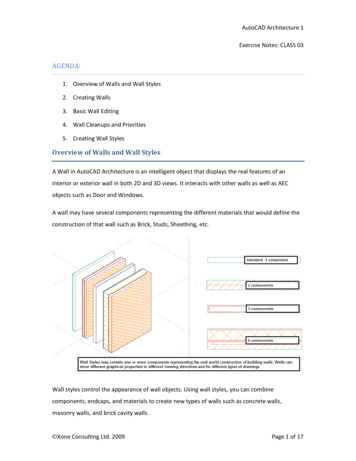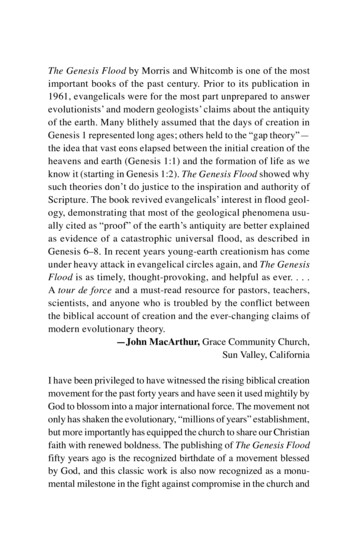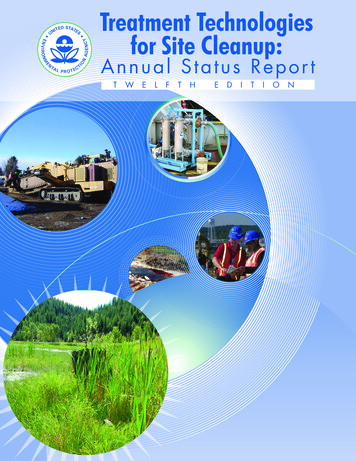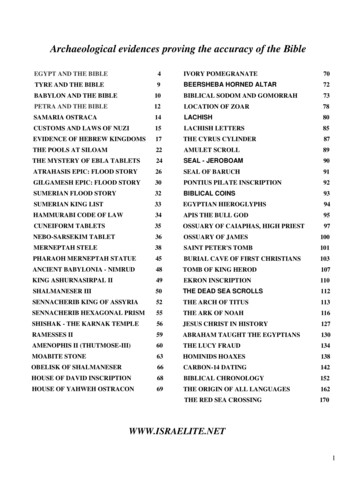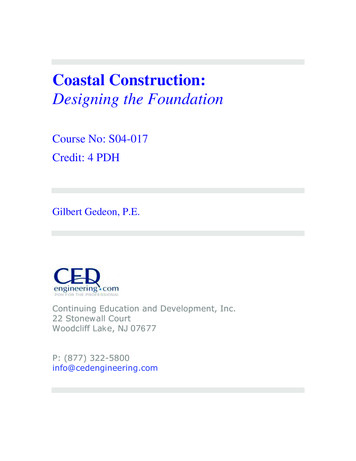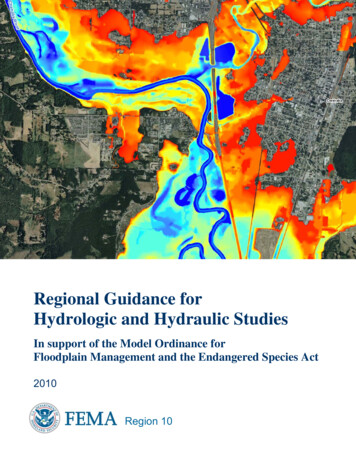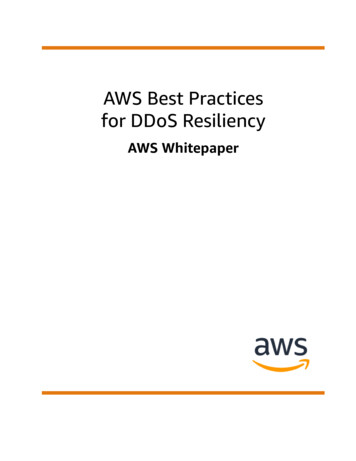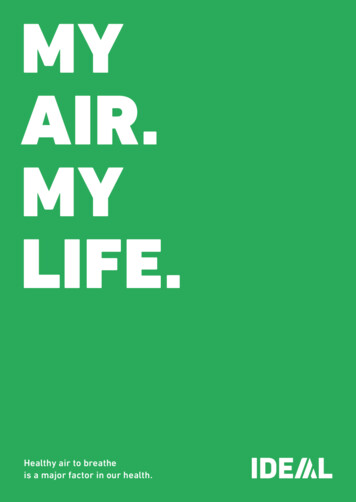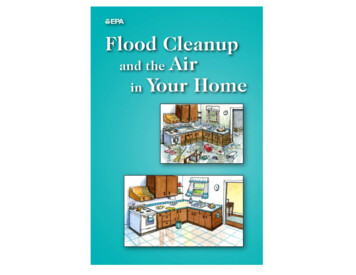
Transcription
EPA 402-K-06-006EPA 402-K-07-002U.S. Environmental Protection AgencyOffice of Air and RadiationIndoor Environments Division1200 Pennsylvania Ave., NWMailcode: 6609JWashington, DC 20460www.epa.gov/iaqFlood Cleanup and theAir in Your HomeThis booklet tells you how to cleanup after a flood and how to preventindoor air problems.1
What can happen to the air2in your home after a flood?3
Clean and dry your house andeverything in it.Flood water can make the air in your homeunhealthy. This is because when things get wet formore than 2 days they usually get moldy. There mayalso be germs and bugs in your home after a flood.45
Mold may be morelikely to make somepeople with asthma,allergies, or otherbreathing problems sick.6Talk to your doctor or anothermedical professional if you havequestions about cleaning or workingin a home that has been flooded.7
Clean and dryIf there is a large amount of mold, you may want tohire professional help to clean up the mold.8Clean up mold and germs from the flood water. Fixany leaking pipes and other water problems and thendry things, or the mold will grow again.9
When cleaning Wear an N-95respirator. Wear goggles. Wear gloves sothat you don'ttouch mold withyour bare hands. Wear long pants,Choose goggles without vent holes, so the molddoesn’t get in your eyes.a long-sleevedshirt, and bootsor work shoes.1011
N-95 respiratorN-95 RespiratorN-95 RespiratorWear a respirator, an “N-95 respirator,” mask overyour mouth and nose, so that you do not breathe in alot of mold. A respirator that protects against mold iscalled an N-95 respirator.Hardware stores usually sell N-95A dust maskrespirators. Only use a respirator that saysor handkerchiefwill not protectDust Maskyou becausemold can passthrough it.12N-95 on the package.Handerchiefor Bandana13
Throw awayanything that was wetwith flood water andcan’t be cleaned.1415
Do not mix cleaningClean and dry hard surfaces such as showers, tubs,and kitchen countertops. If something is moldy, andcan't be cleaned and dried, throw it away. Use adetergent or use a cleaner that kills germs.16products together or addbleach to other chemicals.17
Sometimes thepower goes out after aflood. So, some peopleuse machines calledportable generatorsfor electricity duringflood cleanup.The exhaust, orfumes, from aportable generatorcould kill you inminutes if you breatheit in! Use portablegenerators OUTSIDEand far away frombuildings.Portable Generator1819
Do not use portable generators inside your houseDo not use a portable generator:or garage. Do not put portable generators onbalconies or near doors, vents, or windows. Do notuse portable generators near where you or yourchildren are sleeping.Do not use a portable generator:between buildings thatare close together.in a garage.near a window.in your home.on a balcony.in a carport.2021
To get information from EPA on the Internet, go -protectindoor-air-quality for flood information for this booklet and more indoor air ww.epa.gov/natural-disasters/hurricanesfor hurricane information2223
NotesTo get more information from the Centers for Disease www.cdc.gov/disasters/floods/index.html Control and Prevention (CDC) on the Internet, go tofor flood htmlfor hurricane information2425
Clean up mold and germs from the flood water. Fix any leaking pipes and other water problems and then dry things, or the mold will grow again. 10 11 . . anything that was wet with flood water and can’t be cleaned. 16 17 . Clean and dry hard surfaces such as showers,
